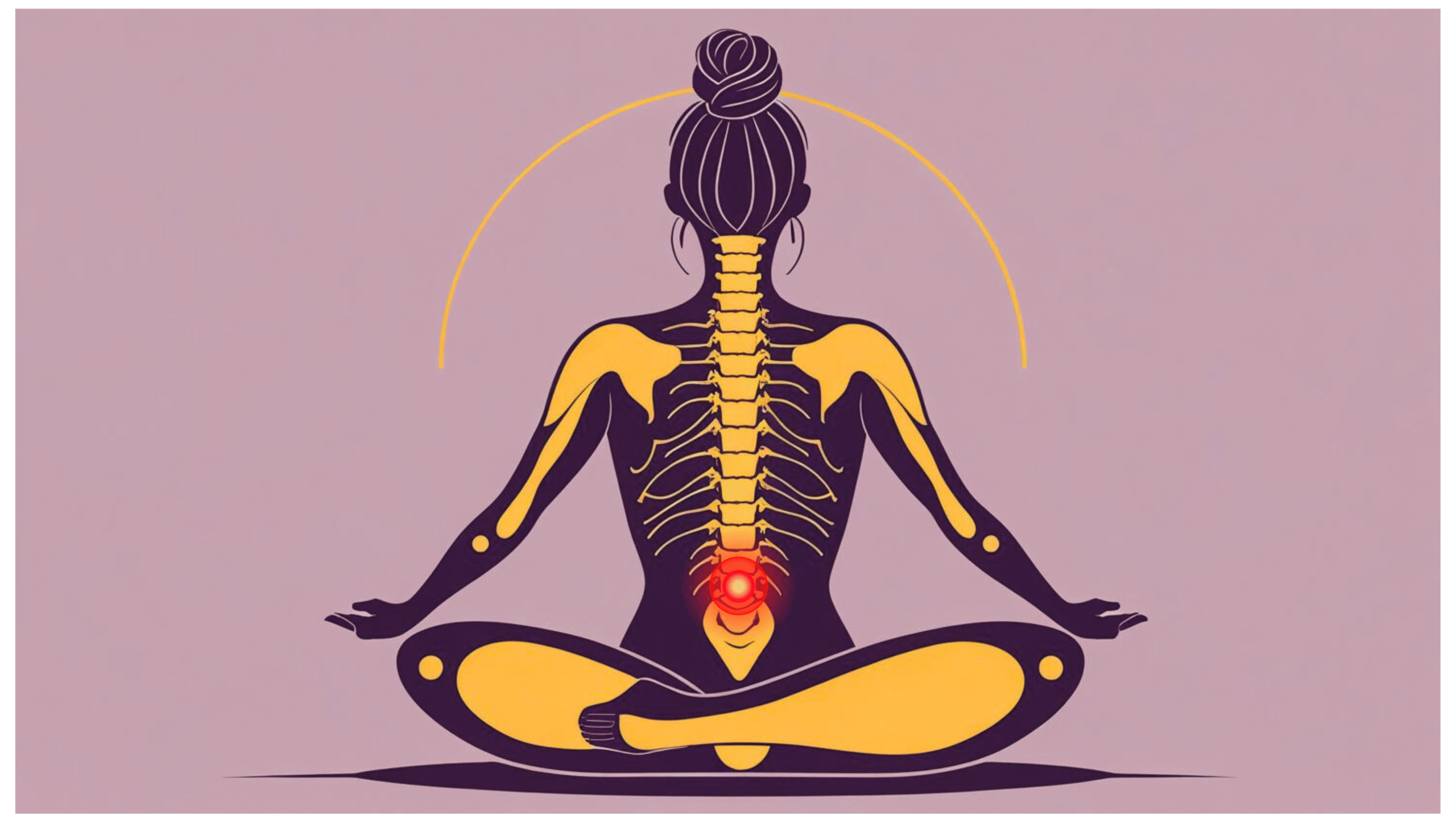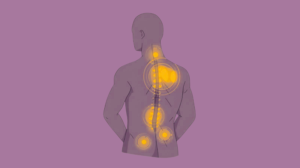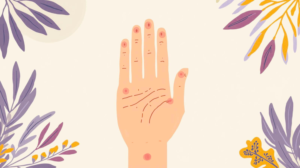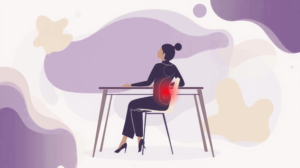Chronic back pain is one of the most common complaints among adults worldwide. According to the World Health Organization, low back pain is the single leading cause of disability globally, affecting people of all ages. While structural abnormalities such as herniated discs or arthritis are often blamed, one frequently overlooked culprit is muscular imbalance.
Muscular imbalance refers to the unequal strength or flexibility between opposing muscle groups. Over time, these imbalances can distort posture, overload certain tissues, and lead to chronic pain—especially in the lower back. Understanding how muscular imbalance develops and contributes to back pain is essential for effective prevention and long-term relief.
What Is Muscular Imbalance?
Muscular imbalance occurs when certain muscles become tight or overactive, while their opposing muscles become weak or underactive. This imbalance disrupts joint alignment and stability, particularly around the pelvis, spine, and shoulders.
In the context of back pain, the problem often lies between:
- Tight hip flexors and weak glutes
- Overactive lower back muscles and underactive abdominals
- Tight hamstrings and weak quadriceps (or vice versa)
- Rounded shoulders and weak upper back muscles
These asymmetries place undue stress on the spinal structures and can trigger chronic discomfort, especially during daily movements or prolonged sitting.
How Muscular Imbalances Cause Chronic Back Pain
1. Pelvic Tilt and Postural Distortion
An anterior pelvic tilt, where the pelvis rotates forward due to tight hip flexors and weak glutes/abs, is a common postural fault. This posture increases the arch in the lower back (lumbar lordosis), compressing spinal joints and causing muscle fatigue.
On the other hand, a posterior pelvic tilt, caused by tight hamstrings and weak hip flexors, flattens the spine and reduces shock absorption. Both types lead to abnormal force distribution across the spine.
2. Overloading Specific Muscles
When certain muscles are overactive (e.g., lower back extensors), they compensate for underactive ones (e.g., deep core stabilizers). This overuse leads to trigger points, spasms, and chronic soreness.
3. Altered Movement Patterns
Muscular imbalance affects how we move. Poor squat, bending, or lifting mechanics due to imbalances result in compensations, increasing strain on the spine over time.
4. Reduced Joint Stability
Muscle imbalances reduce dynamic stability of the spine, making it more vulnerable to injury during movement, especially under load.
Common Muscular Imbalances Linked to Back Pain
1. Weak Core Muscles vs. Overactive Lower Back
The deep abdominal muscles (transverse abdominis, obliques) play a vital role in spinal stabilization. When these are weak, the lumbar extensors compensate, leading to fatigue and strain.
2. Tight Hip Flexors vs. Weak Glutes
Prolonged sitting shortens the iliopsoas and rectus femoris. This inhibits gluteal activation and alters pelvic alignment, contributing to an exaggerated lumbar curve and pain.
3. Rounded Shoulders and Forward Head Posture
These upper-body postural imbalances increase thoracic kyphosis and shift the head forward, leading to compensation in the lower spine to maintain balance.
4. Hamstring Dominance and Glute Inhibition
When the glutes underperform, the hamstrings often take over hip extension, leading to strain and tightness in the posterior chain.
Risk Factors for Muscular Imbalances
- Sedentary lifestyle: Prolonged sitting shortens and weakens key muscles.
- Repetitive activities: Occupations or sports that require repeated movements can strengthen some muscles at the expense of others.
- Poor posture: Habitual slouching reinforces muscular asymmetry.
- Injury: Compensation for pain or weakness elsewhere can create imbalance.
- Lack of cross-training: Focusing only on certain muscles in workouts (e.g., biceps, chest) while neglecting others (e.g., back, glutes).
Signs That Muscular Imbalance May Be Causing Your Back Pain
- Consistent soreness or tension in the lower back after sitting or standing
- Uneven movement patterns (e.g., leaning to one side)
- Limited mobility in hips or spine
- One leg or shoulder feeling “dominant” during movement
- Difficulty activating core or glute muscles
- Back pain that worsens with movement but doesn’t improve with rest
Diagnosing Muscular Imbalances
If you suspect muscular imbalance is contributing to your chronic back pain, it’s crucial to seek assessment from a physical therapist or movement specialist. Diagnostic tools include:
- Postural assessment
- Range of motion tests
- Muscle strength and flexibility testing
- Functional movement screening
These evaluations help identify which muscles are overactive, tight, weak, or inhibited — allowing for a customized corrective strategy.
Correcting Muscular Imbalances: What Works
1. Stretch Overactive or Tight Muscles
Muscles that are chronically tight need regular, intentional stretching to restore optimal length and reduce tension on joints.
Examples:
- Hip flexor stretches
- Hamstring stretches
- Chest/shoulder openers
- Lower back stretches
Tip: Hold each stretch for 20–30 seconds, 2–3 times per day.
2. Strengthen Inhibited or Weak Muscles
Identify and strengthen the underactive muscles using resistance exercises and activation drills.
Key muscles to target:
- Gluteus maximus and medius
- Transverse abdominis
- Deep neck flexors
- Upper back/postural muscles
Examples:
- Glute bridges
- Bird-dogs
- Planks
- Face pulls or resistance band rows
3. Re-train Functional Movements
Practice correct movement patterns in squatting, hinging, lifting, and walking to reestablish balanced motor control.
Recommendations:
- Perform movements slowly and with intention.
- Use mirrors or video feedback to ensure symmetry.
- Begin with bodyweight before adding resistance.
4. Correct Posture Throughout the Day
Postural awareness during work, driving, and standing is key to breaking the cycle of muscular compensation.
Tips:
- Adjust desk ergonomics (screen at eye level, back supported).
- Sit with feet flat on the floor and hips/knees at 90 degrees.
- Take breaks to stand, stretch, and move every 30–60 minutes.
5. Integrate Core Stability Training
Deep core muscles stabilize the spine. Focus on slow, controlled exercises that target spinal support, not just superficial abs.
Examples:
- Dead bugs
- Side planks
- Pallof presses
- Abdominal bracing drills
Prevention Tips to Avoid Future Imbalances
- Alternate between standing and sitting throughout the day.
- Cross-train — vary your workouts to strengthen all muscle groups.
- Include mobility work in every fitness session.
- Listen to your body — address small aches before they become chronic.
- Stay consistent with your corrective exercise routine.
When to See a Professional
If your back pain:
- Persists longer than 3 months
- Is accompanied by numbness, tingling, or weakness
- Affects your sleep or daily activities
- Doesn’t improve with rest or basic exercise
It’s time to consult a physical therapist, chiropractor, or orthopedic specialist. Chronic muscular imbalance requires a tailored rehabilitation program.
Conclusion
Muscular imbalance is a silent yet powerful contributor to chronic back pain. It develops slowly through years of poor posture, inactivity, repetitive motion, or one-sided training. Left unchecked, it can lead to spinal misalignment, joint strain, and long-term discomfort.
The good news is that muscular imbalances are correctable — and preventable. Through targeted stretching, strength training, posture correction, and functional retraining, you can address the root cause of your pain and restore balance to your body. By investing in muscular balance today, you’re paving the way for a pain-free, active future.
References:
American Physical Therapy Association. (2020). Posture and movement. https://www.choosept.com/guide/physical-therapy-guide-posture
Cleveland Clinic. (2021). Poor posture: How it affects your health. https://health.clevelandclinic.org/the-dangers-of-poor-posture
Harvard Health Publishing. (2019). Why good posture matters. Harvard Medical School. https://www.health.harvard.edu/pain/why-good-posture-matters
Mayo Clinic. (2021). Preventing back pain. https://www.mayoclinic.org/diseases-conditions/back-pain/in-depth/back-pain/art-20044507
National Institute of Neurological Disorders and Stroke. (2020). Low back pain fact sheet. https://www.ninds.nih.gov/Disorders/Patient-Caregiver-Education/Fact-Sheets/Low-Back-Pain-Fact-Sheet
National Institutes of Health. (2020). Posture and musculoskeletal health. https://www.ninds.nih.gov/Disorders/All-Disorders/Back-Pain-Information-Page
World Health Organization. (2019). Musculoskeletal conditions. https://www.who.int/news-room/fact-sheets/detail/musculoskeletal-conditions
Vos, T., et al. (2020). Global burden of 369 diseases and injuries in 204 countries and territories, 1990–2019: A systematic analysis for the Global Burden of Disease Study 2019. The Lancet. https://www.ncbi.nlm.nih.gov/pmc/articles/PMC7151183/
Canadian Centre for Occupational Health and Safety. (2020). Safe lifting practices. https://www.ccohs.ca/oshanswers/ergonomics/liftingsafely.html
Centers for Disease Control and Prevention. (2021). How much physical activity do adults need? https://www.cdc.gov/physicalactivity/basics/adults/index.htm























